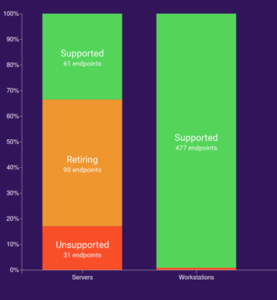RAMP (Road Map’s Asset Management Program)

From initial site survey’s with agentless tools for short merger and acquisition projects, to full blown asset management solutions, Road Map Technologies works with multiple vendors to create the solution that works for you. Business needs vary based on size. Small businesses find it hard to get good solutions for asset management because they do not have enough clients to meet minimum license requirement. Enterprises look for products that can cover a spectrum of technologies that can be integrated back to a CMDB.
Business Capability Modeling
Objectives:
- Define business strategies and outcomes that are associated with defined business capabilities
- Associate data/information points, business processes, applications, and technologies to specific business capabilities, thereby giving a full stack view of everything affected a business capability
- Compare current state and future state capability models, thereby producing a roadmap that can be turned into actionable projects
- Visually represent the health/maturity of a business capability based on the health of the underlying tech stack
Application/Technology Portfolio Management
Objectives:
- Identify where overlap exists between applications that are linked to business capabilities
- Calculate the total cost of ownership (TCO) of an application or piece of technology, including maintenance/subscription amounts and employee support time
- Classify applications into tolerate, invest, migrate and eliminate (TIME) categories based on business value and technology risk, then visually present the information in such a way as to drive strategic business decisions
- Display technology and application lifecycle timelines as defined by the vendor along with defined lifecycle timeline; lifecycle timelines may be sourced via third-party data sources through our partners and vendors
- Visually represent the health/maturity of an application and system based on the health of the underlying tech stack
Security
Objectives:
- Identify unprotected devices
- Identify deprecated OS and patches
- Identify 3rdparty software vulnerabilities
Architecture Modeling & Analysis
Objectives:
- Model system architectures and the various integration points that might exist within an enterprise
- Provide strategy for maintaining an up-to-date architecture model within the product
- Demonstrate the design of a new system architecture model by leveraging reference architecture models or artifact documents
- Define what applications are defined as systems of record for specific data points or information
- Visually demonstrate the enterprise impact from changes made to an application, data point, business process or piece of technology
- Cost analysis for cloud migrations
 |
 |
 |
 |
 |
 |
Are you ready for a reliable IT partner who will join you in the trenches and get it done right?

